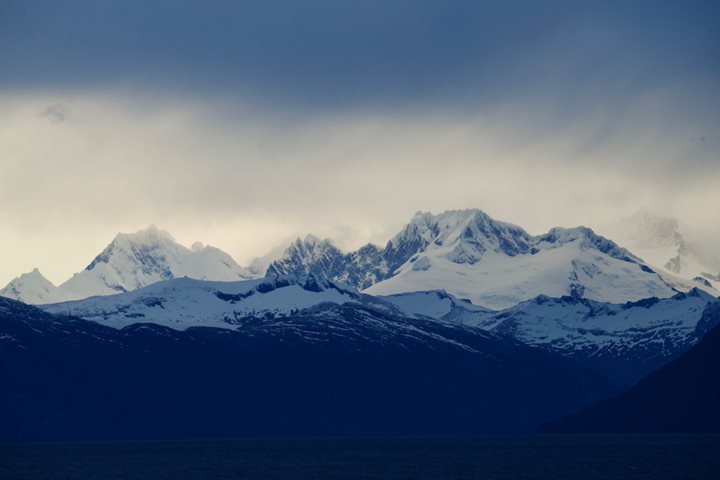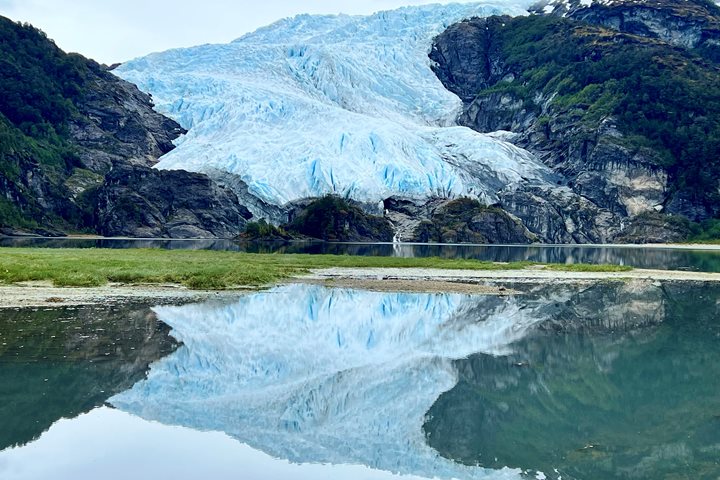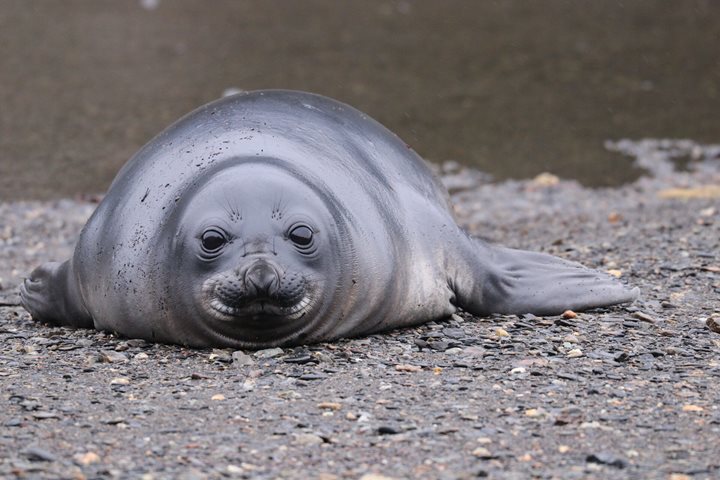As our expedition onboard National Geographic Explorer continues to delve deeper into the Chilean fjords, the intricate waterways keep astounding us with new sights, sounds, and indeed even smells. Today we awoke to a gray moody sky and the brilliant blue ice hues of Pio XI glacier.
Our morning was to be spent exploring the glacier face by Zodiac, however initially it was not the ice that drew us out, rather away from the glacier we rode towards what we presumed to be a fin whale carcass (although specific anatomical markings were difficult to discern).
Whale strandings are not uncommon in the Chilean fjords, even a mass stranding of more than 30 whales of several different species happened this last May. Necropsies have been done, but no rhyme or reason found for the moment. Nothing in such a natural habitat is wasted so death turns to life, and animal remains are recycled as nutrients for the whole ecosystem. On this fin whale carcass there were no less than 10 Andean condors feeding.
The Andean condor (Vultur gryphus) is in the New World vulture family Cathartidae and is the only member of the genus Vultur. Found in the Andes mountains and adjacent Pacific coasts of western South America, the Andean condor has a maximum wingspan of 3m (11 ft) exceeded only by the wingspans of four other seabirds/water birds—two of which we may have a chance to see later in the voyager—the wandering albatross and royal albatross. The condor is primarily a scavenger, feeding on carrion. It prefers large carcasses, such as those of deer or cattle—or in this case the whale. It reaches sexual maturity at five or six years of age and nests at elevations of up to 5,000m (16,000 ft), generally on inaccessible rock ledges, and lays one or two eggs. The Condor is one of the world's longest-living birds, with a recorded lifespan of over 70 years.
As our morning on the water continued, more delights of the southern Chilean forest revealed themselves—nesting Cicoi herons, oystercatchers, ashy-headed geese, and mated kelp geese.
Back aboard we settled in for an afternoon of ship cruising complete with a barbecue on deck AND a small group of killer whales—three females and one male. Because of the grand expanse and intricate waterways winding along the coastline, killer whales are a rare find in the Chilean fjords. These were Patagonian offshore killer whales, which specialize at feeding on the South American sea lions found in the area.
As we near the midway point in our voyage, we are beginning to bring together the greater picture of our expedition—the intricate ways all the pieces of the fjord ecosystem are intertwined from glacier to geese.







